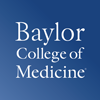Publications
Export 17 results:
Author Title [ Year ]
] Filters: Author is Shaw, Chad A and Keyword is Humans [Clear All Filters]
Deletions of recessive disease genes: CNV contribution to carrier states and disease-causing alleles. Genome Res 23, 1383-94 (2013).
Incidental copy-number variants identified by routine genome testing in a clinical population. Genet Med 15, 45-54 (2013).
Parent of origin, mosaicism, and recurrence risk: probabilistic modeling explains the broken symmetry of transmission genetics. Am J Hum Genet 95, 345-59 (2014).
Parental somatic mosaicism is underrecognized and influences recurrence risk of genomic disorders. Am J Hum Genet 95, 173-82 (2014).
Absence of heterozygosity due to template switching during replicative rearrangements. Am J Hum Genet 96, 555-64 (2015).
Alu-mediated diverse and complex pathogenic copy-number variants within human chromosome 17 at p13.3. Hum Mol Genet 24, 4061-77 (2015).
DNA REPAIR. Mus81 and converging forks limit the mutagenicity of replication fork breakage. Science 349, 742-7 (2015).
Somatic mosaicism: implications for disease and transmission genetics. Trends Genet 31, 382-92 (2015).
Identification of a RAI1-associated disease network through integration of exome sequencing, transcriptomics, and 3D genomics. Genome Med 8, 105 (2016).
Molecular diagnostic experience of whole-exome sequencing in adult patients. Genet Med 18, 678-85 (2016).
Multiallelic Positions in the Human Genome: Challenges for Genetic Analyses. Hum Mutat 37, 231-234 (2016).
De Novo Disruption of the Proteasome Regulatory Subunit PSMD12 Causes a Syndromic Neurodevelopmental Disorder. Am J Hum Genet 100, 352-363 (2017).
Identification of novel candidate disease genes from de novo exonic copy number variants. Genome Med 9, 83 (2017).
An Organismal CNV Mutator Phenotype Restricted to Early Human Development. Cell 168, 830-842.e7 (2017).
Resolution of Disease Phenotypes Resulting from Multilocus Genomic Variation. N Engl J Med 376, 21-31 (2017).
Predicting human genes susceptible to genomic instability associated with /-mediated rearrangements. Genome Res 28, 1228-1242 (2018).





